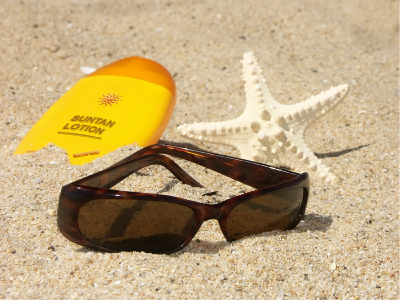Protecting your skin from the sun’s ultraviolet rays is an essential part of maintaining your skin’s health and youthful appearance. However, there is some confusion about the types of sunscreens that can be used to protect your skin. Sunscreens are available in two types: physical and chemical. Both types are effective and each has its inherent benefits and potential drawbacks. Today, I’ll explain how physical and chemical sunscreens work to protect your skin and help you decide which solution is better suited for you.
Physical Sunscreens
Physical sunscreens work by shielding your skin from UV rays. This is achieved by covering the surface with small particles. Ingredients used in physical sunscreens include titanium dioxide and zinc oxide. These ingredients deflect the UV rays and prevent their penetration into your dermis. Physical sun filters can protect your skin from both UVA and UVB rays. In order to provide full spectrum coverage, sunscreens must include zinc oxide which protects against the full spectrum of UVA and UVB rays; titanium dioxide is not able to protect against the longest wavelength UVA rays.
Traditionallly, physical sun filters tended to leave a white cast to skin, especially problematic if your skin is medium to darker tone. However, technology has stepped in and newer formulations have been quite successful in minimizing this effect.
Choose from a range of effective formulations including:
- Marie Veronique Organics Sunscreens
- Keys Solar Rx
- Heiko Natural Sunscreens
- Cliniderm Chemical Free Sunscreen
Chemical Sunscreens
Chemical sunscreens use synthetic agents such as avobenzone, Tinosorb S and Tinosorb M, Octylcrylene along with Mexoryl SX and Mexoryl XL as active ingredients. Rather than coating your skin like a physical sunscreen, the active agents in chemical sunscreens are absorbed into your skin. Instead of blocking UV rays from the top of your skin’s surface, they absorb the UV radiation before converting and releasing it as energy. Chemical sunscreens can offer broad protection against both UVA and UVB rays. What is important is in selecting one that does offer protection against both, generally achieved with a combination of filters.
Though generally well tolerated, chemical filters may irritate some skin types. The newer ones such as Tinosorb M and Tinosorb S, Mexoryl XL and Mexoryl SX are less likely to do so. As well, dermatologists often recommend sticking with a physical blocking sunscreen in very young children.
Which Sunscreen Is Better?
Both physical and chemical sunscreens can effectively protect your skin from UV radiation. Both have inherent strengths and potential weaknesses. Chemical sunscreens have tended to be preferable due to their high efficacy and the fact that they’re mostly invisible once applied to the skin. However, newer physical blocking sunscreens utilize technology that makes them palatable as well and if you are actively seeking products with fewer chemicals and preservatives, then a physical sunscreen may be your best option.
The important thing is to select a sunscreen that protects your skin from both UVA and UVB rays. And, ensure that you use it regularly, year round.




